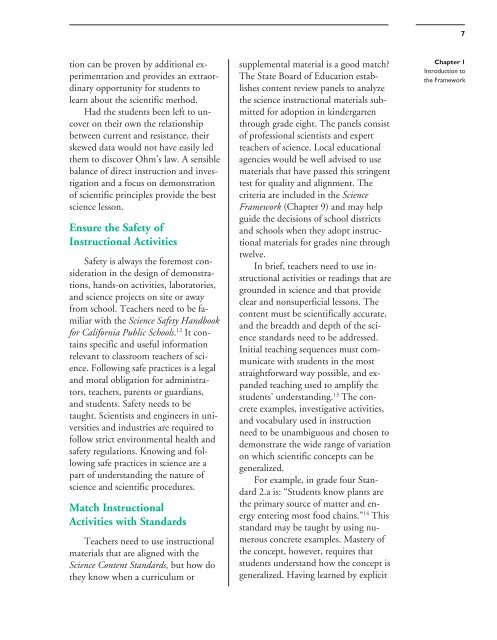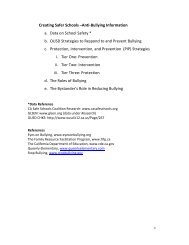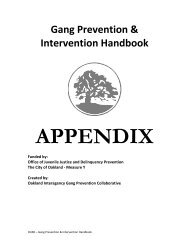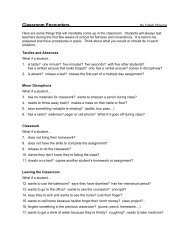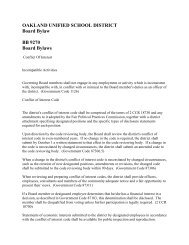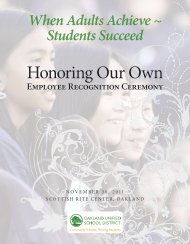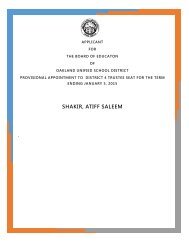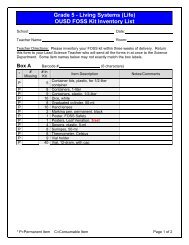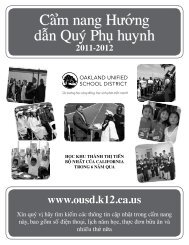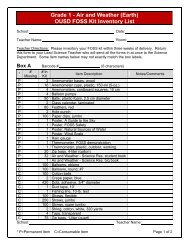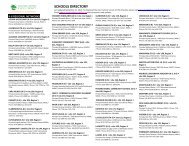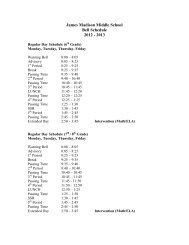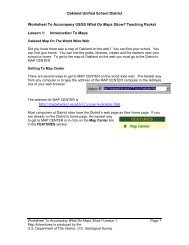Science Framework, part 1 - Free Downloads (CA Dept of Education)
Science Framework, part 1 - Free Downloads (CA Dept of Education)
Science Framework, part 1 - Free Downloads (CA Dept of Education)
- No tags were found...
You also want an ePaper? Increase the reach of your titles
YUMPU automatically turns print PDFs into web optimized ePapers that Google loves.
7tion can be proven by additional experimentationand provides an extraordinaryopportunity for students tolearn about the scientific method.Had the students been left to uncoveron their own the relationshipbetween current and resistance, theirskewed data would not have easily ledthem to discover Ohm’s law. A sensiblebalance <strong>of</strong> direct instruction and investigationand a focus on demonstration<strong>of</strong> scientific principles provide the bestscience lesson.Ensure the Safety <strong>of</strong>Instructional ActivitiesSafety is always the foremost considerationin the design <strong>of</strong> demonstrations,hands-on activities, laboratories,and science projects on site or awayfrom school. Teachers need to be familiarwith the <strong>Science</strong> Safety Handbookfor California Public Schools. 12 It containsspecific and useful informationrelevant to classroom teachers <strong>of</strong> science.Following safe practices is a legaland moral obligation for administrators,teachers, parents or guardians,and students. Safety needs to betaught. Scientists and engineers in universitiesand industries are required t<strong>of</strong>ollow strict environmental health andsafety regulations. Knowing and followingsafe practices in science are a<strong>part</strong> <strong>of</strong> understanding the nature <strong>of</strong>science and scientific procedures.Match InstructionalActivities with StandardsTeachers need to use instructionalmaterials that are aligned with the<strong>Science</strong> Content Standards, but how dothey know when a curriculum orsupplemental material is a good match?The State Board <strong>of</strong> <strong>Education</strong> establishescontent review panels to analyzethe science instructional materials submittedfor adoption in kindergartenthrough grade eight. The panels consist<strong>of</strong> pr<strong>of</strong>essional scientists and expertteachers <strong>of</strong> science. Local educationalagencies would be well advised to usematerials that have passed this stringenttest for quality and alignment. Thecriteria are included in the <strong>Science</strong><strong>Framework</strong> (Chapter 9) and may helpguide the decisions <strong>of</strong> school districtsand schools when they adopt instructionalmaterials for grades nine throughtwelve.In brief, teachers need to use instructionalactivities or readings that aregrounded in science and that provideclear and nonsuperficial lessons. Thecontent must be scientifically accurate,and the breadth and depth <strong>of</strong> the sciencestandards need to be addressed.Initial teaching sequences must communicatewith students in the moststraightforward way possible, and expandedteaching used to amplify thestudents’ understanding. 13 The concreteexamples, investigative activities,and vocabulary used in instructionneed to be unambiguous and chosen todemonstrate the wide range <strong>of</strong> variationon which scientific concepts can begeneralized.For example, in grade four Standard2.a is: “Students know plants arethe primary source <strong>of</strong> matter and energyentering most food chains.” 14 Thisstandard may be taught by using numerousconcrete examples. Mastery <strong>of</strong>the concept, however, requires thatstudents understand how the concept isgeneralized. Having learned by explicitChapter 1Introduction tothe <strong>Framework</strong>


